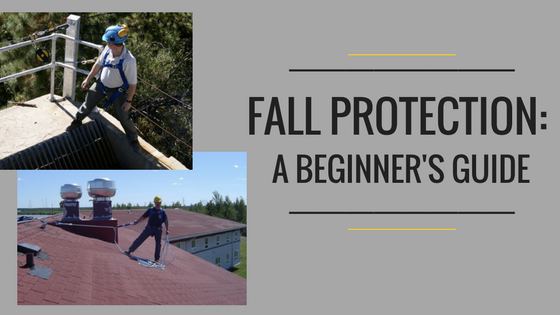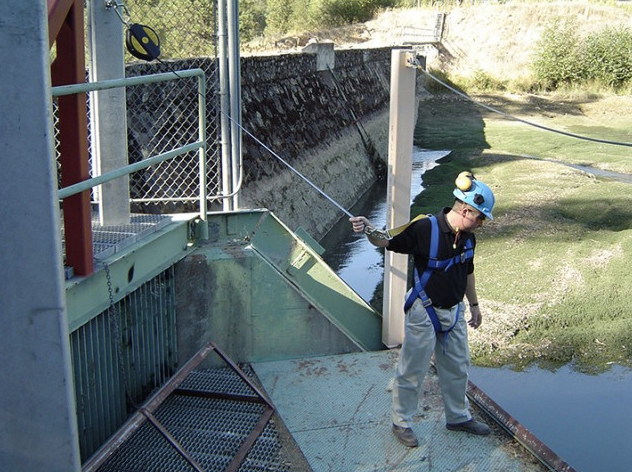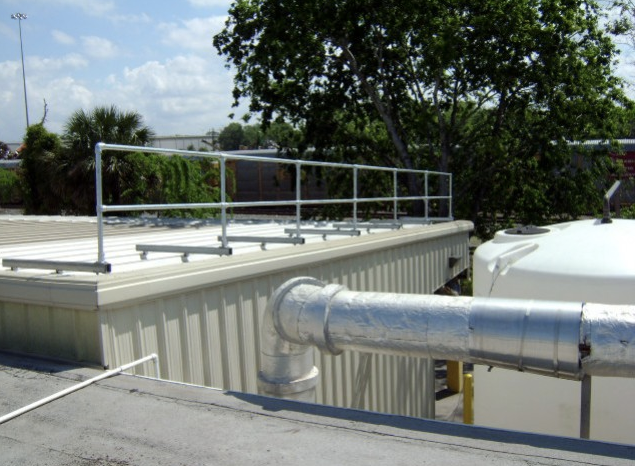 Does your company provide services that involve working at height? Then, according to the 29th Title of the Federal Regulations Code issued by the Occupational Safety and Health Administration (OSHA) of the U.S. Department of Labor, your employees need fall arrest protection equipment.
Does your company provide services that involve working at height? Then, according to the 29th Title of the Federal Regulations Code issued by the Occupational Safety and Health Administration (OSHA) of the U.S. Department of Labor, your employees need fall arrest protection equipment.
What Is Fall Arrest and How Does It Work?

Fall arrest is a fall protection form that involves safely stopping a person from falling. Other forms of fall protection are fall guarding (protection preventing a person’s access to a fall hazard area) and fall restraint (protection preventing the falling of persons working in a fall hazard area).
Fall arrest systems are necessary in situations that involve working in elevating positions and pose a falling risk for the worker. They should be used by anyone working at a height of 6 feet or more. Working height represents the distance between the walking or working surface and the lower level.
There are two major types of fall arrest: general (nets) and personal (lifelines). The fall arrest system only comes into service when or if a fall occurs. According to OSHA standards, only retractable lifelines, or full-body harnesses with shock-absorbing lanyards are accepted as personal fall arrest systems. Full-body harnesses distribute forces throughout the workers’ body, while shock-absorbing lanyards decrease total fall arresting forces.
Beyond Fall Arrest
Besides fall arrest, there are three more types of fall protection equipment:
- Positioning – These systems hold workers in place while leaving their hands free, to allow them to work. They are activated every time the workers lean back. They do not provide fall arrest.
- Suspension – These systems lower and support workers while leaving their hands free for the activities they need to perform. They are commonly used in painting and window washing, in conjunction with fall arrest systems.
- Retrieval – This category covers retrieval methods in the event of a fall and should be included in all fall management programs.
As you can see, fall arrest systems are an important way to provide effective protection in case a fall occurs. The other categories are meant to prevent falls or diminish consequences.
Fall Protection System Types and Specifics
Depending on the purpose they serve, and the activities they are used for, OSHA recommends different types of fall safety equipment:
- Body belts restrain persons working in hazardous positions to reduce fall risk. They are for positioning only, so they cannot replace fall arrest systems.
- Chest harnesses can be used in environments with limited fall hazard that does not include vertical free fall, or for retrieval of persons from tanks, bins, or narrow spaces.

TriTech Fall Protection Systems guardrails are a part of our fall protection systems for roofs. - Full body harnesses have the power to arrest the most dangerous falls.
- Suspension belts can be used to support workers needing to adjust their position vertically or to perform various activities while hanging.
- Rope lanyards are used as restraint means due to their elastic properties.
- Web lanyards are ideal for work environments with fall hazards under 2 feet.
- Cable lanyards work best in hot or corrosive environments but should be backed up by shock absorbing systems.
- Shock absorbers reduce fall arresting forces and fall injury risks.
- Rope grabs are deceleration devices travelling on lifelines, allowing safe ascension and descent of the worker or locking of the lifeline in case of fall.
- Retractable lifelines ensure fall protection and mobility in high fall hazard areas.
- Safety nets are best used for projects where there are no temporary floors or scaffolds, and the fall distance is higher than 25 feet.
- Rails can be used on fixed ladders and curved surfaces, to prevent falls.
Choose a System that Supports Your Team
Not sure which of these systems would work best for your team or whether the one you intend to use meets OSHA requirements? At Tritech Fall Protection Systems, we can provide you with all the information you need and supply any type of fall arrest protection equipment you want. Contact us now and let us help you ensure the safety of your employees and your peace of mind!

I bought a Guardian harness about 4 months ago to work on a cabin I’m building. I was working on a roof and stepped on a tool. I lost my balance even though I was holding the rope with one hand. I stopped short of the edge. That was a lesson. I will never go up without a harness and I will pay more attention to where the tools are.
Don’t gamble with your life bro
Thanks so much for sharing! It is helpful for me and I love it. Worth article!
thank you for sharing very useful information about
fall arrest system